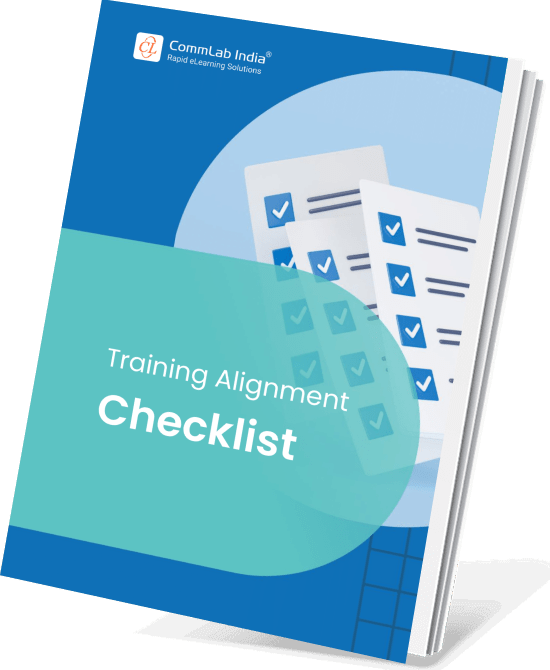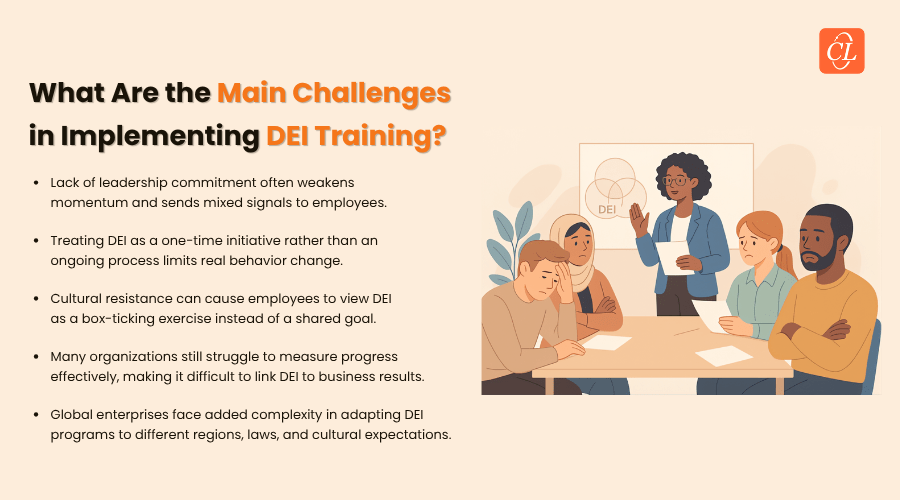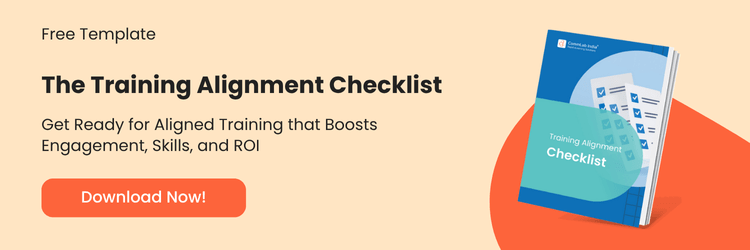Every organization likes to believe it’s fair, open, and welcoming. Yet, beneath the polished mission statements and corporate values, many employees still feel unseen, unheard, or uncertain about where they fit. They attend meetings but hesitate to speak. They contribute ideas but rarely see them recognized. They belong to the company—but not always to the culture.
That silent gap between presence and belonging is where real transformation begins. It’s about removing the invisible barriers that prevent people from thriving at work. It’s ensuring that fairness isn’t just a policy; equality isn’t a checklist, and inclusion isn’t an afterthought.
Across industries, forward-thinking organizations are reexamining what opportunity, collaboration, and trust truly mean. They’re realizing that healthy cultures don’t happen by accident—they’re built intentionally through awareness, empathy, and continuous learning.
So, what will finally help us bridge that gap and build workplaces where everyone truly belongs?
Download Now: The Training Alignment Checklist
Table Of Content
What Is DEI Training?
DEI training stands for Diversity, Equity, and Inclusion training, is a structured learning process that helps employees understand, respect, and engage with individual and cultural differences in the workplace. It focuses on promoting fair treatment, equal opportunities, and a sense of belonging for all, regardless of background, identity, or experience. The aim is to create awareness, challenge assumptions, and build everyday habits that make the workplace more open and equitable.
Understanding the Three Pillars of DEI
1. Diversity
Diversity represents the wide range of human differences that exist within a workplace—race, gender, ethnicity, culture, language, age, physical abilities, religion, and beyond. It also includes a diversity of thought, perspective, and life experience.
For example, a design team composed of people from different age groups and cultural backgrounds will naturally approach challenges from varied angles. That mix of experiences leads to richer discussions and more innovative outcomes.
2. Equity
Equity ensures fairness in how opportunities and resources are distributed. It recognizes that people start from different circumstances and may need different forms of support to achieve similar outcomes. Unlike equality—which treats everyone the same—equity focuses on giving individuals what they need to succeed.
For instance, an organization might provide language support for non-native speakers or mentoring programs for employees from underrepresented backgrounds. Such measures help balance the field and ensure fair participation for all.
3. Inclusion
Inclusion is the environment that makes diversity and equity meaningful. It’s about ensuring that all employees feel respected, heard, and able to contribute without fear of exclusion or bias. Inclusion transforms representation into engagement by encouraging openness and participation.
An inclusive organization values every voice, ensures decision-making is transparent, and builds trust through consistent respect and recognition. When inclusion is present, people feel they belong—not just as employees, but as integral parts of the organization’s growth.
What Are the Different Types of DEI Training?
What Are the Key Advantages of DEI Training?
Here Are the Real Benefits That Go Beyond Awareness
- Improved Retention: Inclusive organizations are 6x more likely to retain top talent by fostering belonging.
- Better Decision-Making: Diverse teams outperform others by up to 60% on complex challenges.
- Cross-Team Collaboration: Builds empathy and reduces friction across departments.
- Leadership Impact: Equips managers with tools to identify and remove systemic bias.
- Long-Term ROI: Turns inclusion into a business advantage through innovation and stronger team performance.
Organizations implement various types of DEI training depending on their goals, workforce diversity, and the level of awareness among employees. Each type targets a specific need—whether it’s building understanding, reducing bias, or strengthen leadership training to promote inclusion and trust.
Here are some of the most effective forms of DEI training used in the workplace today.
1. Basic Diversity Awareness Training
Basic diversity awareness training lays out the groundwork for understanding workplace differences. It helps employees become more aware of how culture, background, and identity shape behavior and perspectives. The focus is on promoting mutual respect and helping teams work together with empathy and understanding.
Example: An introductory workshop that explores cultural, gender, and generational diversity to help employees recognize bias and communicate more inclusively.
2. Unconscious Bias Training
Unconscious bias training teaches employees to recognize and manage hidden biases that influence decisions and interactions. These biases are often unintentional but can affect hiring, teamwork, and leadership practices.
Example: Through reflective exercises or simulations, participants learn how automatic associations—like assuming leadership qualities belong to certain genders or age groups—can impact fairness, and how to make more objective choices.
3. Skills-Based Inclusion Training
Skills-based inclusion training focuses on developing practical behaviors that make inclusivity part of daily work. It’s especially useful for managers and leaders who set the tone for team culture and decision-making and can be enhanced with custom training tailored to an organization’s unique goals and workforce dynamics.
Looking for Customizable Inclusion Programs? Explore CommLab India’s Custom eLearning Solutions
Example: A training module that helps managers provide equitable feedback, create safe discussion spaces, and address conflict with fairness and empathy.
4. Allyship and Anti-Oppression Training
Allyship training empowers employees to support colleagues from underrepresented groups. It encourages people to use their voice and influence to challenge unfair behavior, advocate for others, and create a culture of accountability.
Example: Employees learn how to intervene respectfully when they witness exclusionary comments or microaggressions and how to amplify the contributions of marginalized teammates.
5. Cultural Sensitivity Training
Cultural sensitivity training builds understanding of different cultural norms, values, and communication styles—essential for global or cross-functional teams. It helps employees interact more effectively with colleagues and clients from diverse backgrounds.
Example: A global team might participate in sessions that explore how communication styles vary by culture—helping members collaborate more smoothly and respectfully.
6. Inclusive Hiring and Recruitment Training
Inclusive hiring training ensures fairness throughout the recruitment process. It helps HR teams and managers identify bias in job descriptions, interviews, and evaluations, ensuring every candidate is assessed based on merit.
Example: Recruiters learn to write neutral job postings, ask consistent interview questions, and evaluate candidates using standardized criteria to reduce bias in decision-making.

The Training Alignment Checklist
Aligned Training that Boosts Engagement, Skills, and ROI!
- 15 expert-crafted questions to assess alignment
- Built-in framework to spot gaps
- Quick, actionable tool to catch misalignment
- And more!
What Kind of Topics Can Be Included in DEI Training?
DEI training is most effective when employees learn through experience rather than lecture. Practical, well-designed activities give people the chance to reflect, empathize, and practice inclusion in real situations—turning awareness into daily action.
The Global Collaboration Challenge
Teams work together on a simulated project while navigating cultural, linguistic, and time-zone differences. This activity helps employees build cross-cultural awareness and communication flexibility—essential for inclusion in hybrid and global workplaces.
The Empathy Exchange
Employees pair up and share personal experiences about moments they felt excluded or misunderstood. Each participant then retells their partner’s story from their perspective. This deep listening exercise builds emotional intelligence, empathy, and mutual respect across teams.
The Inclusion Audit
Groups review anonymized organizational data—such as representation by department or promotion of outcomes—and identify patterns of inequity. This activity links inclusion to measurable outcomes, helping participants understand how everyday systems can either reinforce or reduce bias.
Watch to learn how to build impactful DEI training
What Makes These Activities Impactful? An Analysis
The 2025 DEI Workplace Report highlights a crucial finding: while 81% of employers believe that reducing or scaling down their DEI initiatives would harm their business, only 42% actually connect DEI outcomes to leadership accountability or measurable performance.
In simple terms, most organizations recognize that inclusion is important—but far fewer are turning that understanding into measurable action. This is where experiential learning makes a real difference. When DEI training includes activities that involve reflection, collaboration, empathy, and data review, it shifts from being a one-time awareness session to a practical tool for workplace transformation.
Organizations that take this hands-on approach see tangible results: higher engagement, stronger retention among underrepresented employees, and a closer link between inclusive culture and overall business performance. Studies also show that companies that actively track and apply DEI metrics experience up to a 30% rise in employee engagement and a 25% improvement in retention.
Simply put, DEI training has the greatest impact when it connects learning with measurable results—turning inclusion from a value statement into a proven driver of business success.

How Is DEI Training Implemented Successfully?
DEI training implementation is the structured process of planning, delivering, and sustaining diversity, equity, and inclusion initiatives. It ensures learning translates into long-term behavioral change and measurable cultural impact.
Here’s a structured process L&D and HR leaders can follow to design, execute, and sustain DEI training:
1. Assess the Current State: Start with an in-depth analysis of your workforce data, employee sentiment, and inclusion gaps. This baseline ensures training addresses real challenges, not assumptions, and provides measurable benchmarks for progress.
2. Secure Leadership Alignment: Authentic change begins with leadership. When executives participate in training and communicate its strategic importance, employees see DEI as a shared organizational value rather than a formality.
3. Define Clear and Measurable Objectives: Set focused goals that connect learning outcomes to business impact—like improving collaboration or reducing bias in hiring. Clear objectives make it easier to measure effectiveness and sustain accountability.
4. Design Contextual and Relevant Content: Avoid generic training modules. Build content around real workplace examples, industry dynamics, and employee experiences. This ensures relatability and strengthens behavioral adoption of post-training.
5. Deliver Interactive, Experiential Learning: Shift from traditional presentations to scenario-based and discussion-led sessions. Experiential learning helps participants internalize concepts, develop empathy, and apply inclusive practices in daily work.
6. Gather Feedback and Analyze Insights: Collect post-session data to understand how employees perceived and applied what they learned. Analyzing feedback enables you to refine training methods and ensure continuous improvement.
7. Reinforce Learning Continuously: A one-time session won’t shift culture. Introduce microlearning refreshers, peer-led discussions, and leadership messages that keep inclusion top of mind and translate awareness into everyday behavior.
8. Measure and Communicate Impact: Track indicators like engagement, promotion equity, and team performance to assess real outcomes. Sharing results reinforces transparency, trust, and organizational commitment to progress.
9. Review, Adapt, and Scale: Regularly revisit your DEI strategy as the workforce evolves. Scaling successful interventions and updating outdated content helps maintain relevance and sustain impact over time.

Do’s and Don’ts for Effective DEI Implementation
Even the best-intentioned DEI programs can fail without structure and timing. Here’s a quick, action-ready guide for L&D leaders to ensure training drives real cultural change, not just awareness.
|
Do This for Impact |
Avoid This to Prevent Backlash |
|
Link DEI sessions to current business challenges (like hybrid work or global collaboration). |
Running generic “respect at work” workshops that ignore real organizational pain points. |
|
Use behavioral nudges—like reminders, prompts, and recognition—to reinforce learning daily. |
Expecting a one-time training to create lasting change without follow-up reinforcement. |
|
Involve skeptics early and let them co-design parts of the program to build ownership. |
Excluding dissenting voices or labeling pushback as resistance. |
|
Train middle managers as DEI translators—they influence daily culture more than executives. |
Focusing all efforts on top leadership while neglecting mid-level influence. |
|
Combine DEI insights with performance reviews and team KPIs to sustain accountability. |
Treating DEI training outcomes as “soft skills” with no measurable impact. |
|
Capture and share employee stories internally to show progress and normalize inclusion. |
Overloading training with policies and theory instead of relatable real-life experiences. |
|
Use analytics and the power of AI in L&D to detect subtle bias patterns in everyday collaboration—not just during hiring. |
Ignoring data insights and relying on perceptions or anecdotal evidence. |
Still Have Questions About DEI Training? Explore the FAQs
DEI training works best when it’s consistent, inclusive, and supported by modern tools. To help you navigate its frequency, cost, compliance aspects, and common misconceptions, here are a few frequently asked questions that explain how DEI training works in real-world organizations.
How often should DEI training be conducted?
Experts recommend conducting DEI training at least twice a year, supplemented by short, ongoing learning touchpoints such as microlearning modules or team discussions. Regular reinforcement ensures that inclusion becomes part of daily behavior rather than a one-time initiative.
Who should participate in DEI training?
DEI training should include everyone in the organization—from executives and managers to frontline employees. While leaders play a crucial role in modeling inclusive behavior, employees at all levels shape the culture through their daily interactions and decisions.
Top Tools That Make DEI Training More Effective
Modern DEI training in large U.S. enterprises is powered by smart, data-driven tools. AI-based learning platforms (like Degreed and Docebo) personalize learning paths, bias-detection tools (such as Textio and Applied) ensure fair communication and hiring, and analytics dashboards (like Workday and Power BI) measure representation and engagement.
What Is the Average Cost of DEI Training?
The cost of DEI training varies depending on an organization’s size and training approach. Smaller businesses often assign DEI responsibilities to existing staff, while larger enterprises invest in specialized teams and structured programs. Companies with 2,000–10,000 employees typically allocate $50,000–$300,000 annually for DEI initiatives. In contrast, a Fortune 1000 company—with around $15 billion in revenue and over 30,000 employees—may spend millions of dollars each year on comprehensive DEI training programs.
What are the legal risks or compliance considerations linked to DEI training?
Legal risks in DEI training arise when programs unintentionally violate employment or civil rights laws. Common issues include reverse discrimination, where initiatives seem to favor one group; Title VII violations, if sessions stereotype or pressure employees to disclose personal beliefs; and religious discrimination, if participation conflicts with faith-based views. Poorly designed mandatory compliance training can lead to coercion or retaliation claims, making adherence to EEOC and workplace equality standards essential.
What are common misconceptions about DEI training?
Common misconceptions about DEI training include viewing it as a one-time workshop, assuming it only benefits underrepresented groups, or believing diversity alone ensures inclusion. Some also fear it lowers hiring standards or instantly eliminates bias. In reality, DEI training is a continuous process that builds awareness, accountability, and culture change across every level of the organization.
In a Nutshell
Inclusion is no longer a regional priority—it’s a global business mandate. Across the U.S. and Europe, organizations are investing in DEI training that goes beyond awareness to build accountability, empathy, and measurable cultural change. For large enterprises, the real impact comes when DEI learning aligns with leadership behavior, data transparency, and everyday decision-making. This alignment not only strengthens engagement and innovation but also ensures consistency across diverse, distributed teams.
To help you evaluate whether your training programs are achieving this level of alignment, we’re offering a free Checklist with a quick diagnostic framework. It includes expert-crafted questions and practical insights to help you assess how well your learning objectives, content, and assessments work together—so your training drives real business outcomes, not just good intentions. Download now!
View the original article and our Inspiration here


